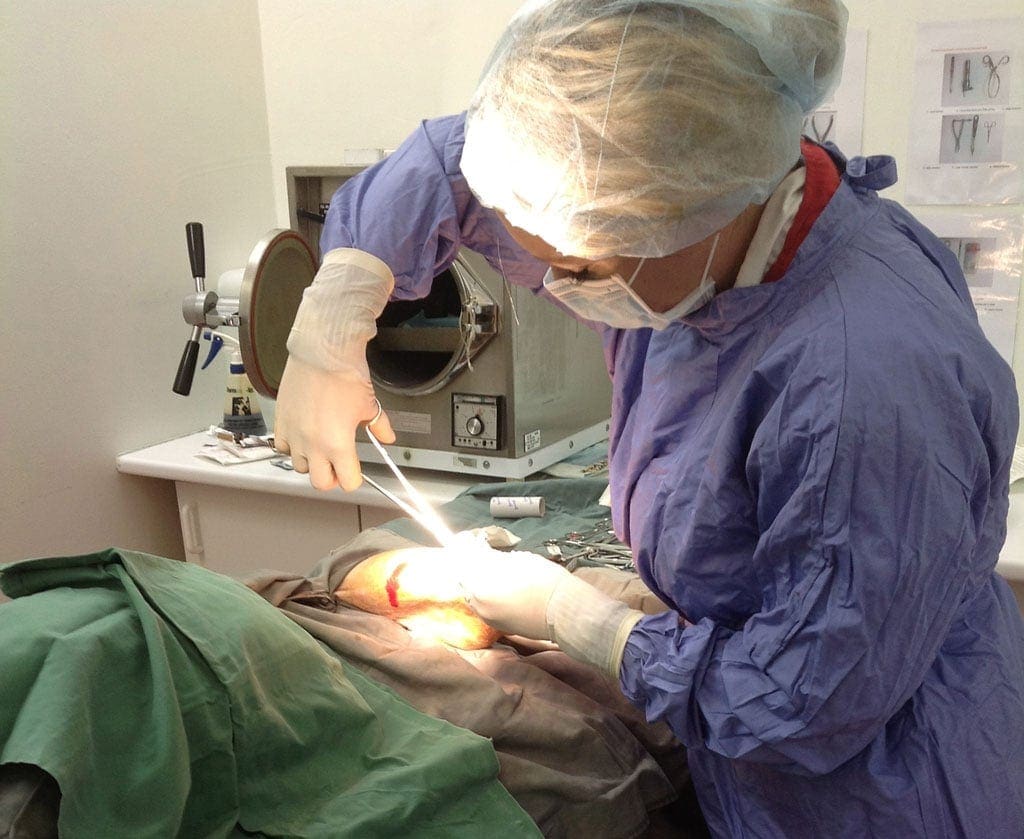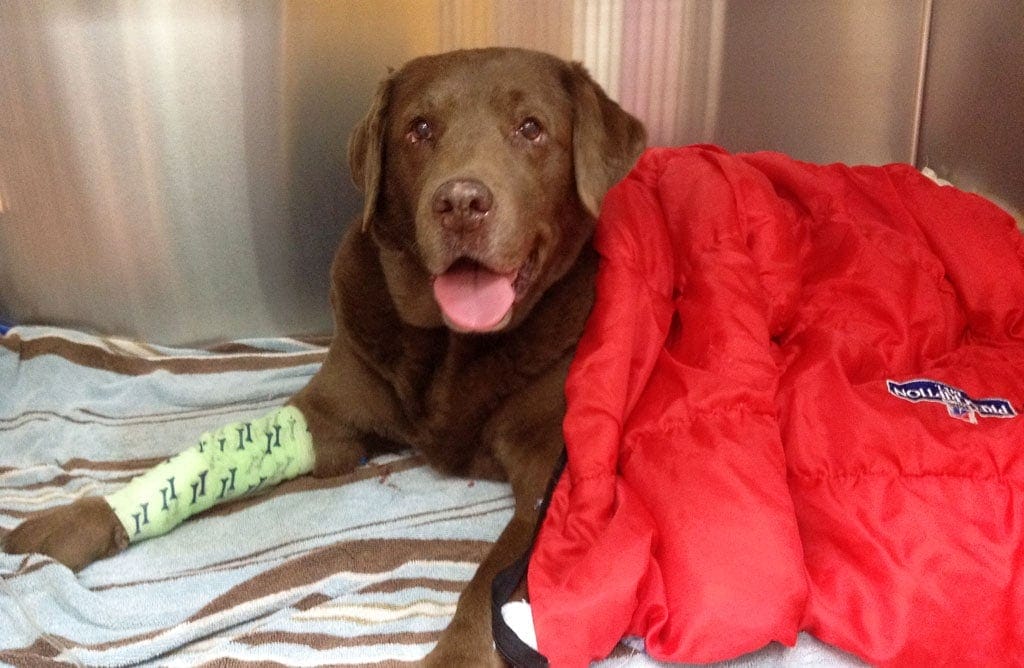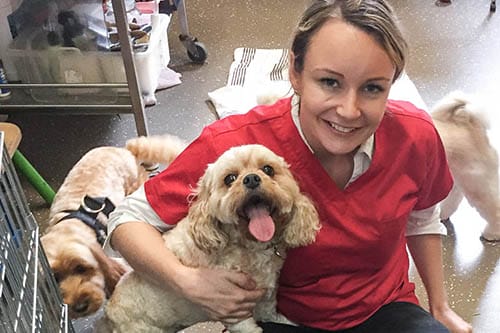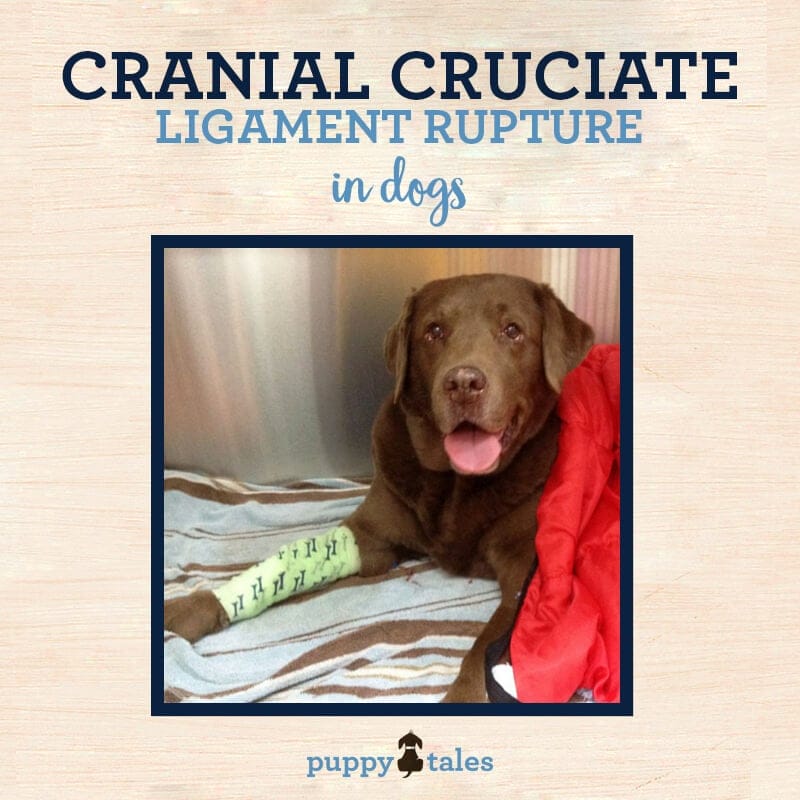It’s not just footballers that rupture their Cranial Cruciate Ligament, and in fact it is the most common orthopaedic injury in our canine counterparts. It is therefore not surprising that it is the most researched and debated veterinary orthopaedic topic around the world. Many top surgeons are striving to find better and better surgical techniques to help treat the resulting joint instability and arthritis this injury leads to.
A Cranial Cruciate Ligament Rupture (CCLR) is a debilitating injury as this ligament is very important in maintaining stability within the knee joint. When it is ruptured, every time your dog places weight on the limb there are abnormal movements and forces within the joint that over time lead to permanent joint damage and arthritis.
Any breed can be affected, but some breeds are over-represented, for example: Labradors, Retrievers, Rottweilers, Newfoundlands, Staffordshire Terriers and Mastiffs.
Most CCLRs are a result of degeneration of the ligament over time, rather than a massive force on the ligament (as is more likely to be the case with top sports players). Dogs th at have ruptured one ligament have roughly a 50% chance of rupturing the ligament in the other knee.
at have ruptured one ligament have roughly a 50% chance of rupturing the ligament in the other knee.
Symptoms of a ruptured ligament
Signs that your dog may have a ruptured ligament can vary. The most common sign is an obvious favouring of the affected limb, but other things to watch out for are difficulty rising, difficulty jumping into the car or going up and down stairs, holding one leg out to the side when sitting, or an audible clicking sound when your dog is walking. The latter sign of an audible ‘click’, is often associated with further damage to the cartilage within the joint, most commonly the medial meniscal cartilage.
Diagnosis
Any of the above signs should prompt a visit to the vet, as cruciate ligament ruptures that are treated early have a better outcome. Your vet will check for instability of the joint. This is easy if you have a dog that will lie nicely on his side, but it can be a bit more difficult for a patient that is tense, nervous or trying to eat the vet for breakfast! In these cases, your vet may recommend a sedative to allow a less painful examination to take place, and often radiographs will be taken at the same time.
Radiographs are helpful in that they will often show an obvious swelling within the joint, which helps confirm the diagnosis, and they also help assess for any arthritis within the joint. Signs of arthritis can be seen on radiographs as early as 6 weeks post cruciate rupture. This proves how devastating this rupture can be to the joint.

Treatment of a CCLR
Once your vet has diagnosed a CCLR, it is likely they will recommend surgery. There is some evidence that conservative management (i.e. strict rest and pain killers) for dogs under 15kg bodyweight produces similar results to dogs who have surgery. This is not true for all smaller dogs, however, and in my experience dogs who have surgery tend to do better, even within this lower weight range. This could be a reflection of the fact that if you operate, you have a good chance to inspect the joint and address any cartilage damage at the same time. Medial meniscal cartilage tears are also very painful.
For all dogs greater than 15kg, there is significant evidence that surgery will give a better outcome i.e. less lameness, pain and arthritis in the long-term. Unfortunately no surgical technique currently available is able to return the joint to its pre-ruptured state and some arthritis is inevitable. It is important however to minimise this as much as possible.
There are several surgical techniques, which is a reflection of the fact that no ‘perfect’ technique has been discovered. The techniques required for larger dogs (those greater than around 25kg) tend to be more complicated surgeries and sometimes require referral to a Veterinary Specialist. My personal preference for dogs less than around 20kg is an ‘extra capsular suture technique’ and for larger dogs, ‘The Tightrope Technique’.


Dr Abbie Tipler, BVSc, MACVS (Surgery)
Dr Abbie is a Small Animal Veterinarian with 10 years full-time experience. Her passion is Small Animal Surgery and in 2011 she studied towards and obtained her Memberships in Small Animal Surgery from the Australian College of Veterinary Scientists. Although surgery is her special interest, she loves all aspects of General Practice, especially canine medicine. She lives with her family and two Ragdoll cats.



